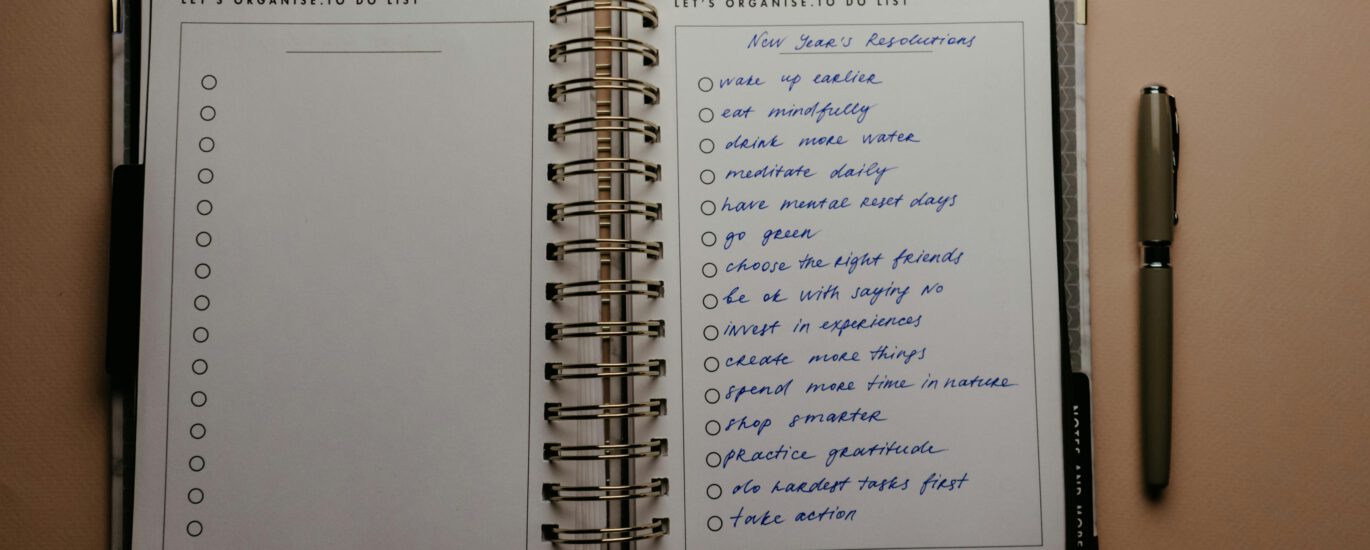The Habit Crisis in Language Learning
Sarah downloads Duolingo with excitement, commits to 30 minutes of Spanish daily, and maintains perfect streaks for three weeks. Then life happens, a busy work project, a family emergency, a weekend trip, and suddenly, her language learning routine crumbles. Sound familiar?
You’re not alone. Research shows that 92% of people abandon their New Year’s resolutions, and language learning goals are among the most commonly dropped. The problem isn’t lack of motivation or intelligence, it’s a fundamental misunderstanding of how habits actually form and stick.
The good news? Science has revealed the real mechanisms behind habit formation, and they’re more powerful and sustainable than any motivation-based approach. By understanding and applying these principles, you can build language learning habits that survive busy schedules, motivation dips, and life’s inevitable curveballs.
Table of Contents
ToggleDebunking the 21-Day Myth
Before diving into effective strategies, let’s address the elephant in the room: the persistent myth that habits form in just 21 days. This oversimplified notion has misled millions of language learners and set unrealistic expectations that often lead to disappointment and abandonment.
The Real Science: Research by Dr. Phillippa Lally at University College London studied 96 people over 254 days and found that habit formation actually takes an average of 66 days, with a range from 18 to 254 days depending on the complexity of the behavior and individual factors.
For language learning specifically, studies show even more variation:
- Simple habits (like reviewing 5 flashcards daily): 18-45 days
- Moderate habits (like 15-minute daily lessons): 45-90 days
- Complex habits (like 30-minute conversation practice): 90-180 days
Why the 21-day myth persists: This misconception originated from Dr. Maxwell Maltz’s observations about patients adapting to cosmetic surgery, which was later misinterpreted and oversimplified by self-help culture. The appeal of a quick fix makes this myth particularly sticky, but believing it actually undermines long-term success.
The Neuroscience of Language Learning Habits
Understanding what happens in your brain during habit formation can transform your approach to language learning. When you first start a new language activity, your prefrontal cortex, the brain’s “executive center”, works overtime, requiring significant mental energy and conscious decision-making.
The Habit Loop: Some Neuroscientists identified the three-part neurological loop that forms habits:
- Cue (Trigger): Environmental or internal signal that initiates the behavior
- Routine (Behavior): The actual language learning activity
- Reward (Benefit): The positive outcome that reinforces the behavior
As you repeat this loop, your brain gradually transfers control from the prefrontal cortex to the basal ganglia, a more primitive brain region that operates automatically. This neurological shift is what makes habits feel effortless once established.
Language Learning Implications: This process explains why early language learning feels mentally exhausting while established routines become almost effortless. Your brain is literally rewiring itself to make language practice automatic.
The Psychology of Sustainable Language Learning
Beyond neuroscience, psychological factors play a crucial role in habit formation. Understanding these can help you design more effective language learning routines.
Intrinsic vs. Extrinsic Motivation: Research consistently shows that intrinsic motivation (learning for personal satisfaction, curiosity, or growth) creates more sustainable habits than extrinsic motivation (learning for external rewards, pressure, or recognition). This is why “I want to connect with my heritage” often outlasts “I need this for my resume.”
The Compound Effect: Small, consistent actions compound over time to create dramatic results. A daily 10-minute language habit equals over 60 hours of practice per year, enough to achieve significant proficiency gains. This mathematical reality makes consistency more valuable than intensity.
Identity-Based Habits: James Clear’s research reveals that the most sustainable habits are those tied to identity rather than outcomes. Instead of “I want to speak Spanish,” try “I am someone who practices Spanish daily.” This subtle shift makes the habit part of who you are, not just what you do.
The 7 Pillars of Unbreakable Language Learning Habits
Start Ridiculously Small
The biggest mistake language learners make is starting too big. Ambitious 60-minute daily sessions feel motivating initially but become overwhelming quickly, leading to all-or-nothing thinking that destroys consistency.
The Minimum Viable Habit: Start with the smallest possible version of your desired habit, so small it feels almost silly not to do it. Examples:
- Review 3 flashcards daily (not 50)
- Listen to one 2-minute podcast episode (not a full 30-minute show)
- Write one sentence in your target language (not a full journal entry)
- Practice pronunciation of 5 words (not complete conversations)
The Science Behind Small Starts: Research shows that tiny habits create less resistance, require minimal willpower, and build confidence through consistent success. Once the neural pathway is established, expanding becomes natural and sustainable.
Real-World Application: Maria, a busy marketing executive, started with just 2 minutes of Italian daily using a language app during her coffee break. After 30 days, this felt automatic, so she gradually expanded to 5 minutes, then 10. Six months later, she was confidently having basic conversations with Italian colleagues.
Master the Art of Habit Stacking
Habit stacking involves attaching new habits to existing, well-established routines. This leverages your brain’s existing neural pathways rather than trying to create entirely new ones.
The Formula: “After I [existing habit], I will [new language habit].”
Powerful Language Learning Stacks:
- “After I pour my morning coffee, I will review 5 new vocabulary words”
- “After I brush my teeth at night, I will listen to a 3-minute language podcast”
- “After I sit down for lunch, I will read one news headline in my target language”
- “After I start my car, I will practice pronunciation for 5 minutes during my commute”
Why This Works: Your existing habits already have strong neural pathways and environmental cues. By piggybacking on these, you eliminate the need to remember or motivate yourself for the new habit, it becomes part of an existing sequence.
Advanced Stacking: Once basic stacks are established, you can create chains: “After I review vocabulary, I will practice pronunciation. After I practice pronunciation, I will write one sentence using new words.”
Design Your Environment for Success
Environmental design is one of the most underutilized yet powerful tools for habit formation. Your surroundings can either support or sabotage your language learning goals.
Friction Reduction: Make language learning as easy as possible by removing barriers:
- Keep language learning apps on your phone’s home screen
- Leave flashcards on your bedside table
- Set up a dedicated language learning space with materials ready
- Use browser bookmarks for your favorite language learning websites
- Keep language learning books in visible, accessible locations
Friction Addition for Competing Behaviors: Make distracting activities harder:
- Log out of social media apps that compete for your language learning time
- Use website blockers during designated study periods
- Keep your phone in another room during focused language sessions
Visual Cues: Strategic placement of visual reminders can trigger language learning behaviors:
- Sticky notes with vocabulary words on your bathroom mirror
- Language learning goals written on your computer monitor
- Books in your target language prominently displayed
- Language-related artwork or maps in your study space
Case Study: David, learning Mandarin, redesigned his morning routine environment. He placed his Chinese textbook next to his coffee maker, changed his phone’s language to Chinese, and put Mandarin flashcards in his car’s cup holder. These simple changes increased his daily practice from 2-3 times per week to daily consistency within two weeks.
Implement Strategic Reward Systems
While intrinsic motivation is crucial for long-term success, strategic rewards can help establish the initial habit loop and maintain momentum during challenging periods.
Immediate Micro-Rewards: The brain needs immediate positive feedback to strengthen neural pathways. Build small rewards directly into your language learning routine:
- Check off completed sessions on a visible calendar
- Use apps with built-in achievement systems and streaks
- Give yourself a small treat after completing daily practice
- Share progress with supportive friends or online communities
- Keep a “wins” journal noting daily language learning successes
Milestone Rewards: Celebrate significant achievements with meaningful rewards:
- After 30 days of consistency: Buy a book in your target language
- After 60 days: Watch a movie in your target language with subtitles
- After 90 days: Plan a virtual conversation with a native speaker
- After 6 months: Take a cooking class featuring cuisine from a country where your target language is spoken
Intrinsic Reward Cultivation: Gradually shift focus from external to internal rewards:
- Notice and celebrate moments of understanding
- Appreciate the mental challenge and growth
- Connect language learning to personal values and identity
- Focus on progress rather than perfection
- Enjoy the process of discovery and cultural connection
Build Anti-Fragile Consistency Systems
Life is unpredictable, and rigid habits often break under pressure. Anti-fragile systems not only survive disruption but actually get stronger from it.
The Minimum Effective Dose: Establish different levels of your habit for different circumstances:
- Ideal conditions: 30 minutes of comprehensive practice
- Normal days: 15 minutes of focused study
- Busy days: 5 minutes of vocabulary review
- Crisis mode: 2 minutes of audio listening or one flashcard review
Never Miss Twice Rule: This principle, acknowledges that perfection is impossible while maintaining momentum. If you miss one day, prioritize getting back on track immediately rather than allowing a single miss to become a pattern.
Comeback Protocols: Prepare specific strategies for returning to your habit after disruptions:
- Pre-planned “restart” routines for after travel, illness, or busy periods
- Simplified versions of your habit that require minimal setup
- Accountability partners who can help you restart
- Self-compassion practices that prevent shame spirals
Flexibility Within Structure: Build adaptability into your routine:
- Multiple time slots when language learning could occur
- Various types of language activities to match your energy and circumstances
- Different locations where you can practice (home, office, commute, gym)
- Both digital and analog backup options
Leverage Social Accountability and Community
Humans are inherently social creatures, and leveraging this tendency can dramatically improve habit consistency. Social accountability creates external motivation that bridges gaps when internal motivation wavers.
Accountability Partners: Find someone with similar language learning goals and commit to regular check-ins:
- Weekly progress sharing via text or video call
- Shared practice sessions or study dates
- Mutual encouragement during challenging periods
- Celebration of milestones and achievements together
Online Communities: Join language learning communities that provide support, motivation, and accountability:
- Reddit communities like r/languagelearning or language-specific subreddits
- Facebook groups focused on your target language
- Discord servers for real-time conversation practice
- Language exchange platforms like HelloTalk or Tandem
Public Commitment: Making your goals public increases commitment through social pressure:
- Share your language learning journey on social media
- Start a blog or vlog documenting your progress
- Join challenges or competitions with public leaderboards
- Tell friends and family about your specific goals and timeline
Teaching Others: One of the most powerful ways to reinforce your own learning is to teach others:
- Help beginners in online forums
- Create content explaining concepts you’ve learned
- Tutor others who are earlier in their language journey
- Share tips and resources with your language learning community
Track Progress and Optimize Continuously
What gets measured gets managed. Systematic tracking provides objective feedback, maintains motivation, and enables continuous improvement of your language learning habits.
Habit Tracking Methods:
- Simple calendar marking: X for completed days, creating visual chains
- Habit tracking apps: Habitica, Streaks, or Way of Life for automated tracking
- Journal logging: Written reflection on daily practice and progress
- Photo documentation: Pictures of completed workbooks, notes, or study sessions
Progress Metrics Beyond Streaks:
- Vocabulary growth: Track new words learned and retained
- Comprehension improvements: Note understanding of increasingly complex content
- Speaking confidence: Record weekly speaking samples to hear improvement
- Cultural knowledge: Document cultural insights gained through language study
- Real-world application: Track successful uses of your target language
Regular Optimization Reviews:
- Weekly: Assess what worked well and what didn’t
- Monthly: Evaluate overall progress and adjust goals if needed
- Quarterly: Review and refine your entire language learning system
- Annually: Set new challenges and celebrate major achievements
Data-Driven Adjustments:
- Identify patterns in when you’re most likely to skip practice
- Notice which types of activities you find most engaging
- Track correlation between different variables (sleep, stress, practice quality)
- Adjust your routine based on what the data reveals about your patterns
Common Habit Formation Pitfalls and How to Avoid Them
Understanding common mistakes can help you sidestep obstacles that derail many language learners:
Perfectionism Paralysis: Waiting for the “perfect” time, materials, or circumstances to start. Solution: Start with what you have, where you are, right now.
All-or-Nothing Thinking: Believing that missing one day ruins everything. Solution: Focus on getting back on track quickly rather than maintaining perfect streaks.
Complexity Creep: Gradually making your habit more complex until it becomes unsustainable. Solution: Regularly simplify and return to your minimum viable habit.
Motivation Dependence: Relying on feeling motivated to practice. Solution: Build systems that work regardless of how you feel.
Comparison Trap: Measuring your progress against others rather than your past self. Solution: Focus on personal improvement and celebrate your unique journey.
Outcome Obsession: Focusing solely on end goals rather than enjoying the process. Solution: Find ways to make daily practice intrinsically rewarding.
Technology Tools for Habit Formation
Modern technology offers powerful tools to support language learning habit formation:
Habit Tracking Apps:
- Habitica: Gamifies habit tracking with RPG elements
- Streaks: Simple, visual habit tracking for iOS
- Way of Life: Color-coded tracking for multiple habits
Language Learning Platforms with Built-in Habit Support:
- Duolingo: Streak tracking and reminder notifications
- Babbel: Progress tracking and personalized review schedules
- Anki: Spaced repetition scheduling for optimal retention
Environmental Design Apps:
- Forest: Blocks distracting apps during study sessions
- Freedom: Website and app blocking across devices
- RescueTime: Tracks how you spend time on devices
Social Accountability Platforms:
- Stickk: Financial commitment contracts for goals
- Coach.me: Professional coaching and community support
- Beeminder: Data-driven goal tracking with financial stakes
Creating Your Personal Language Learning Habit Blueprint
Now that you understand the science and strategies, it’s time to create your personalized system:
Step 1: Assess Your Current Situation
- Identify your current language level and specific goals
- Evaluate your daily schedule and identify potential habit windows
- Recognize your personal motivation patterns and energy cycles
- Acknowledge past habit formation successes and failures
Step 2: Design Your Minimum Viable Habit
- Choose the smallest possible daily language learning action
- Select a specific time and trigger for this habit
- Identify the immediate reward you’ll give yourself
- Plan your environment to support this habit
Step 3: Build Your Support System
- Choose accountability partners or communities
- Set up tracking methods that work for your lifestyle
- Create backup plans for common disruptions
- Establish restart protocols for when you get off track
Step 4: Launch and Iterate
- Start with your minimum viable habit for at least 30 days
- Track both the habit itself and how it feels
- Make small adjustments based on what you learn
- Gradually expand only after the core habit feels automatic
The Long-Term Vision: From Habit to Identity
The ultimate goal isn’t just to build language learning habits, it’s to become someone for whom language learning is a natural part of life. This identity shift typically occurs after 3-6 months of consistent practice, when the habit becomes so ingrained that NOT doing it feels strange.
Signs of Identity Integration:
- You automatically think about language learning opportunities throughout the day
- You feel uncomfortable when you haven’t practiced in a while
- You naturally seek out content in your target language
- Others begin to see you as “the person who’s learning this and that language”





